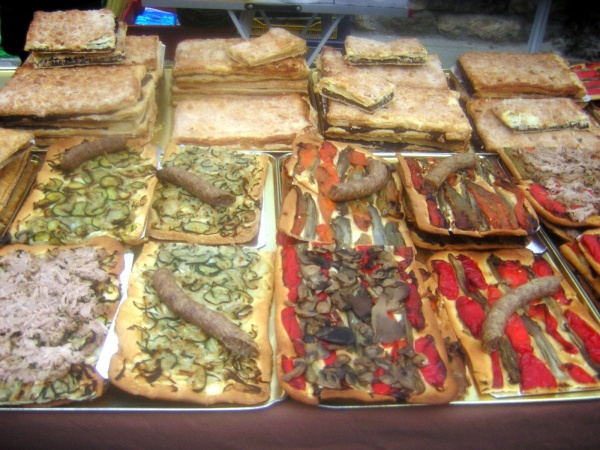Facts About Coca
Coca is a cherished traditional pastry enjoyed in regions such as Catalonia, the Aragonese Strip, Valencia, the Balearic Islands, Andorra, and French Catalonia. The term "coca" actually derives from Dutch and is akin to the English word "cake" and the German word "Kuchen."
There are numerous types of cocas, including sweet and savory varieties, as well as sealed (filled) and open (topped) versions. The primary ingredient is dough, and the toppings can range from fish and vegetables to fruit, nuts, cheese, and meat.
Cocas can appear in various forms:
- Closed cocas (filled pastries)
- Open cocas (pastry base with toppings)
- Cocas with holes
- Plain cocas without toppings
Some popular varieties of cocas include Coca de recapte, Coca de trempó, Coca de Sant Joan, Coca de llanda, and Coca de xulla. These pastries are deeply embedded in Catalan traditions and are often prepared or bought during holidays such as Easter, Christmas, and St. John's Eve.
Similar dishes can be found throughout the Mediterranean. For instance, there's the Algerian coca, Pissaladière from Provence, Lahmacun from Turkey, and Bouchée à la Reine from France, Belgium, and Luxembourg. Sweet pies are also prevalent across Europe, such as the King's cake (Tortell de Reis), a traditional delicacy in Occitania and Catalan-speaking regions during New Year celebrations.

 France
France